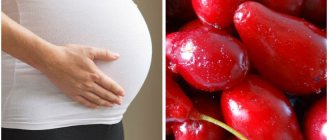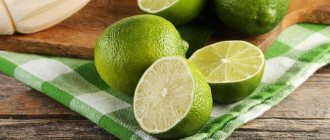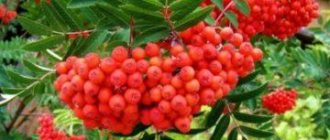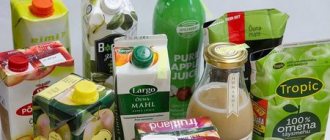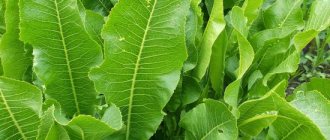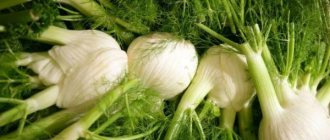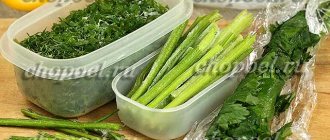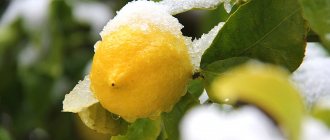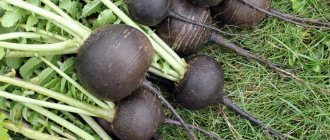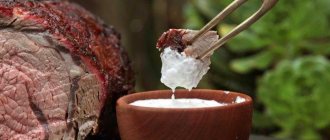Horseradish grows everywhere in various parts of Europe and Asia. The only place where there is no bush is the Arctic regions. This shrub is used to season food for the winter, and also as a spice to enhance the taste of dishes.
Using a remedy made from horseradish as a secondary aid, you can treat various ailments. But horseradish leaves have not only beneficial properties, but also contraindications, which you must be familiar with before use. After all, improper use brings serious consequences and harm to the entire body.
Ways to combat horseradish diseases
In addition to pests, horseradish also affects a number of ailments. The most dangerous of them are verticillium wilt and white rust.
Horseradish ascochyta blight
The main symptoms of horseradish ascochyta blight are large yellowish-brown spots on the leaves.
Mycelium appears on the affected areas, where the pathogenic fungus overwinters. Subsequently, the leaves dry out and fall off. The pathogenic fungus likes to develop in a humid environment, and is also capable of remaining for a long time in post-harvest residues, soil, and seeds.
Methods of struggle.
Preventive measures to combat ascochyta blight include maintaining crop rotation, autumn harvesting and plowing the garden. To treat the disease, the affected leaves are removed and treated with 1% Bordeaux mixture or its substitutes. Note that it is better to spray twice, with an interval of one week.
White rot
White rot is an infectious fungal disease that affects the leaves and roots of horseradish (they are covered with white mycelium and black sclerotia).
If there is a disease, the plant quickly withers and dies. The parasitic fungus actively develops during particularly wet periods, in densely planted horseradish or in soil overly fertilized with nitrogen.
Methods of struggle.
Preventive measures against this disease involve eliminating favorable factors for the development of the fungus, that is, you will need to:
- make sure that the soil under the horseradish is not waterlogged;
- plant horseradish bushes at a distance of 30-50 cm from each other; the row spacing should be at least 60-70 cm;
- feed the plant with balanced fertilizers;
- remove weeds in a timely manner;
- lime acidic soils;
- Buy seeds only in trusted specialized stores.
Did you know? If the horseradish in your garden has already been affected by white rot, then you can plant it in the same area only after 3-4 years.
Belle
If you notice that the leaves, stems, pedicels, and seeds of your plant are covered with a coating similar to white oil paint, then your horseradish has been affected by whiteness.
As the disease progresses, the plant organs turn brown and die. The pathogen is transferred with post-harvest residues.
Fighting methods
. In case of severe damage, spraying with copper-containing preparations is used.
Verticillium wilt
With Verticillium wilt, the causative fungus penetrates the horseradish vascular system.
First, the lower leaves wither, and then gradually the whole plant. The fungal spores overwinter in the soil and can remain there for several years.
Methods of struggle.
If this disease is suspected, it is necessary to inspect the beds every 10 days, and remove diseased plants along with the layer of soil underneath them. After watering, deeply loosen the soil, and also carefully destroy plant remains after harvesting and dig the soil deeply.
Downy mildew
Downy mildew or downy mildew of horseradish affects the leaves.
First, they become covered with light green or yellowish spots, and a gray or whitish coating forms on the back of the leaf blade. Then the spots merge together, the leaves turn brown and die. The plant becomes weak and produces small roots.
Methods of struggle.
Since the main way this fungal disease infects plants is through infected seeds, they must be disinfected before planting. At the first signs of the disease, diseased plants should be removed, and in case of extensive spread of the disease, spraying with fungicides containing copper is recommended.
You can significantly reduce the risk of diseases and pest attacks by caring for your garden and plants, making them strong and resilient. Preventive measures will be:
- compliance with crop rotation and fruit replacement;
- thorough weeding and weed control;
- watering with cool water with the addition of plant insecticides;
- fertilizer;
- autumn harvesting of crop residues;
- deep digging of soil.
All this will also help avoid the use of chemicals.
Contraindications in treatment with horseradish leaves
The main contraindication is hypersensitivity to the components contained in the plant. In some cases, the use of drugs based on horseradish leaves causes side effects.
Treatment with leaves can be harmful to a person who has thyroid dysfunction. But in most cases, a person only benefits from treatment. This common plant used in folk medicine is considered accessible to everyone.
Uses of plant root
Before starting treatment with horseradish leaves, it is recommended to consult a doctor. Herbs have a strong effect on the affected tissues. Specialists choose an effective treatment method for the musculoskeletal system.
Studies of horseradish leaves have shown that bones have the ability to recover, although 10 years ago this phenomenon was considered impossible, and bone damage was perceived as irreversible. Traditional healers show how to use horseradish leaves to restore bone tissue in their practice of treating patients.
They teach what to cook from the leaves, what remedies will be most effective. There is a whole science of how to store the decoction so that its medicinal properties are preserved all winter.
Eating greens enriches the diet with a number of vitamins, microelements, and amino acids. Is it possible for all people to eat horseradish leaves? The answer is likely to be positive.
Greens are a source of amino sugars needed by diabetics; the amino acids they contain stimulate hormonal activity. Every person receives the necessary nutrients to strengthen the immune system.
Young horseradish leaves are used in cooking; they add spice to meat dishes, soups, and sandwiches. Cooks prepare dried leaves and make powder from them for use in winter.
Judging by the reviews of people who have already used the leaves in treatment, their appetite increased, digestion was restored, while horseradish burns excess calories and does not give the body weight gain.
(12 ratings, average 4.1 out of 5)
LiveInternetLiveInternet
—Tags
-Always at hand
—Categories
- (0)
- accessories (83)
- without baking (cakes and pastries) (193)
- beading (59)
- pancakes, pancakes (274)
- legume dishes (107)
- mushroom dishes (124)
- lavash dishes (268)
- meat dishes (426)
- vegetable dishes (1405)
- poultry dishes (809)
- offal dishes (221)
- dishes made from cheese, cottage cheese, milk (246)
- minced meat dishes (594)
- egg dishes (148)
- Korean and Chinese dishes (195)
- action games (113)
- sandwiches, canapés, croutons (224)
- dumplings, dumplings, manti, chebureki, belyashi (363)
- video (245)
- video recipes (983)
- wine cellar (203)
- all about LiRu, diary (72)
- unsweetened pastries (589)
- sweet pastries (629)
- knitting mittens, gloves (55)
- we knit collars, shirt-fronts (135)
- knitting and sewing toys (314)
- knit hats (599)
- knitting for children-clothes (603)
- knitting for children - booties, socks (221)
- knitting for children - hats, panama hats (541)
- knitting for men (100)
- crochet for home (393)
- knitting with fur (38)
- knitting for home (114)
- knitting-enterlac (20)
- knitting/video lessons (94)
- knitting/books, magazines (35)
- knitting/utilities (191)
- cook quickly (119)
- dessert, sweets (496)
- diet, losing weight (160)
- domestic and wild (172)
- home economics (466)
- preparations for the winter/adjika, ketchup, vegetable caviar (187)
- preparations for the winter/freezing (41)
- winter preparations/cabbage (199)
- winter preparations/cucumbers (164)
- winter preparations/peppers, eggplants, zucchini (184)
- winter preparations/tomatoes (292)
- winter preparations/various vegetables (307)
- preparations for the winter/pickles, marinades (310)
- winter preparations/fruits, berries (438)
- snacks (612)
- snack rolls and cakes (73)
- bake in a sleeve, in pots (43)
- casseroles (127)
- salad dressings, sauces, spices (269)
- sounds of nature (20)
- health, beauty (1082)
- ideas for the garden (102)
- from plastic bottles (41)
- history, predictions (46)
- porridge, cereals, pasta (239)
- cinema (127)
- comments/for you (14)
- comments/pictures (35)
- comments/new year (54)
- comments/wishes (26)
- comments/miscellaneous (47)
- comments/season (34)
- comments/emoticons (25)
- comments/thank you-please (60)
- comments/morning-evening (17)
- comments/cards (16)
- indoor plants (213)
- computer, phone (62)
- cooking (319)
- world cuisine (501)
- medicinal plants (645)
- summer T-shirts, blouses, tops (537)
- favorite blogs and sites (50)
- grill, barbecue, grill (158)
- machine knitting (6)
- myths, lost worlds, ancient civilizations (123)
- fashion, cutting and sewing (406)
- wisdom, aphorisms, quotes, parables (253)
- music (408)
- drinks (241)
- traditional medicine (796)
- unknown, mysteries of the Universe (52)
- New Year, Christmas (236)
- socks, knee socks, slippers (327)
- about children, and for children (246)
- cards, pictures, congratulations (124)
- first courses (274)
- alterations (89)
- pies, pies (549)
- pizza (90)
- dresses, tunics, suits, skirts (324)
- blankets, bedspreads (87)
- various weaving (11)
- useful tips (282)
- ponchos, capes, bolero (134)
- Lenten dishes (177)
- poetry, prose (339)
- holidays, congratulations (61)
- holiday dishes (331)
- signs, rituals, magic (214)
- nature (75)
- hairstyles (53)
- psychology, relationships (305)
- pullovers, cardigans, coats (492)
- miscellaneous (211)
- religion, spiritual (206)
- various handicrafts (128)
- fish and seafood (836)
- garden, vegetable garden (338)
- garden, vegetable garden/pests, plant diseases, weeds (158)
- garden, vegetable garden/beds, mulching, smart garden (104)
- garden, vegetable garden/trees, berry gardens, shrubs (196)
- garden, vegetable garden/greens, root vegetables, legumes (50)
- garden, vegetable garden/cabbage (19)
- garden, vegetable garden/onion, garlic (52)
- garden, vegetable garden/cucumbers, zucchini, pumpkin (98)
- garden, vegetable garden/plant nutrition, fertilizers (132)
- garden, vegetable garden/seedlings, seeds (91)
- garden, vegetable garden/tomatoes, peppers, eggplants (124)
- garden, vegetable garden/flowers, ornamental plants (67)
- salads (685)
- lard (187)
- crocheted and knitted napkins, tablecloths (306)
- simoron, esoterics (47)
- sweet tooth (420)
- handbags (118)
- different dough (292)
- acupressure, su-jok (200)
- trainings, moods (52)
- patterns, motifs, samples, knitting patterns (385)
- patterns, samples, motifs, crochet patterns (413)
- decorations, costume jewelry (24)
- knitting lessons (470)
- flash drives (33)
- bread, flatbreads, buns (138)
- handmade flowers (156)
- scarves, shawls, stoles, bacti, snoods (440)
- we sew for children (147)
- this is interesting (361)
- Yulia Minyaeva (19)
- humor, jokes (392)
—Quote book
Suitable for non-standard figures.
The author shares secrets and teaches how to take unusual measurements. A delicious snack recipe in 5 minutes. You can cook for holidays and for every day Dan.
People have many other names for the cat's paw. Often it is already clear from them which pain is caused.
Maintaining health is not an easy job. Over time, our organs and organizational functions.
The recipe is a lifesaver, you can always prepare it in advance, store it for a long time and serve it on occasion.
—Search by diary
—Subscription by e-mail
-Friends
Other recipes with horseradish
You can use horseradish leaves and its hot root in dried form. In this case, to prepare a vodka tincture you need to take 2 tbsp. l. raw materials per 1 liter of alcohol. Dried roots and leaves of horseradish, which can be used in winter, contain fewer vitamins, but essential oils and glycosides are preserved almost completely. Otherwise, the same techniques and infusion times are used, which include recipes using fresh horseradish.
The medicinal properties of horseradish leaf and its root are used in other cases. So, to help with baldness, you can rub diluted horseradish juice into the scalp. Extract it from the fresh root by grating and squeezing about 1 tbsp. l. burning liquid. The juice should be mixed with water in a 1:1 ratio and rubbed into the scalp on problem areas. The irritating and warming effect leads to the awakening of dormant hair follicles. You only need to do this procedure once a week, about 30 minutes before washing your hair.
Before use, you should check your skin for sensitivity, as allergies or irritation may occur from a too caustic drug. To do this, apply a small amount of a mixture of juice and water to the inside of the elbow. If the reaction is not too strong, the product can also be used on the scalp.
If you are not allergic to horseradish, you can also make a toning face mask: 1 tsp. Horseradish pulp should be mixed with 3 tsp. applesauce, peach puree and 1 tsp. cream or sour cream. The product is applied to a previously cleansed face for 10 minutes, then washed off with warm water. This mask perfectly refreshes the skin of the face, neck, and décolleté that has been damaged by sun rays and tightens fine wrinkles.
For bruises and sprains, osteochondrosis or radiculitis, you can use a fresh plant as a compress. To do this, 2-3 large leaves need to be poured with boiling water, applied to the sore spot and wrapped. A compress of horseradish leaves for diseases of the joints or spine is usually made at night. In the morning you need to remove it and wipe the skin with a damp cloth. Leaves harvested while horseradish was in bloom can be dried and used for compresses in the form of a mass brewed with boiling water.
It is useful to know how to use horseradish for a cough for those who often suffer from colds with difficult sputum discharge. The use of juice with honey is possible for children at least 3 years old. To prepare a tasty cough syrup, you need to grind 200 g of the root, pour 0.5 liters of boiling water over it and leave for 24 hours. Mix the strained extract with honey and heat the mixture to 500ºС, without bringing to a boil. Adults can take 2 tbsp. l. mixtures 2-3 times a day, and for children the dosage is reduced by 2 times.
Instead of mustard plasters, a mixture of grated root and liquid honey (1:1) is traditionally used. The mixture should be applied to a cloth and applied to the back and chest for a lingering dry cough. The patient needs to be wrapped and the compress held for 30 minutes. When applying horseradish treatment in the form of “mustard plaster”, you need to avoid areas where the heart and spine are located.
The use of horseradish in medicine of different nations is based on its irritating properties. We should not forget about this feature of the plant, as it also has contraindications. Before using tinctures, decoctions and compresses from roots and leaves, consultation with your doctor is required. It is advisable not to replace medicinal methods of treating diseases with amateur herbal medicine.
Step-by-step cooking process
1. Dark pink varieties of tomatoes are considered sweeter and are perfect for spicy seasoning. If you take a different type of tomato, you will have to increase the amount of sugar, depending on your taste. Horseradish leaves must be fresh. When cut, this plant becomes dry very quickly, so you must not miss the moment to turn the horseradish leaves into a juicy green mass.
2. Wash tomatoes, peppers and horseradish leaves. Tomatoes are cut into halves, the yellow thickening near the stalk is cut off.
3. Place horseradish leaves on a paper towel to remove excess moisture. Then the leaves are cut into arbitrary strips.
4. Tomatoes and chopped leaves are placed in the bowl. Both products are crushed with a blender to obtain a thick, homogeneous mass. To achieve the desired consistency, the blender must operate in turbo mode.
5. Add peeled garlic cloves and turn on the blender again.
6. Chop the hot pepper very finely. If the pepper is large, you can limit yourself to half. Hot pepper seeds create a “fiery environment”. To make the seasoning moderately spicy, shake the seeds out of the pod. Stir the mixture until the pepper pieces are evenly distributed.
7. Add salt and sugar. This stage can be considered the final stage if the seasoning is left raw and stored in the refrigerator. Then it is transferred to sterile jars, and it can “live” in the refrigerator for a month.” And winter preparations must be sterilized. Prepared dry sterilized jars are filled with seasoning, the necks are covered with metal lids. The jars are immersed in water up to their shoulders; sterilization of half-liter jars lasts 10-12 minutes from the moment of boiling. Then the lids are rolled up.
8. The jars cool down in an inverted position; they should be covered with a warm blanket. Spicy seasoning made from horseradish leaves and tomatoes for the winter is ready. Bon appetit!
Source: f-journal.ru
Useful properties of horseradish greens
The weed, perceived by many summer residents as a strong clutter of land, actually contains various essential oils that are useful for treating the human musculoskeletal system. Of course, the weed takes up a lot of space, it has a strong root system and rich, juicy greenery.
And it is often difficult for all summer residents and gardeners to remove it from the land, not realizing that they can get help for their health from the plant. All gardeners and summer residents know what horseradish leaves look like.
Uses of horseradish leaves
Green horseradish leaves contain a lot of useful substances:
- vitamin C, in higher content than it is in lemon;
- vitamins A, B;
- many nutritious carbohydrates;
- mustard oil;
- vegetable fats;
- minerals – Mg, Fe, Zn;
- essential oils;
- natural phytoncides;
- resinous substances.
Medicinal properties of horseradish
Its ability to penetrate deeply into soft tissues gives foliage medicines a variety of medicinal properties:
- action against various inflammatory processes in bone structures;
- acts as an antiseptic;
- effective pain reliever;
- action against microbes, viruses;
- eliminates swelling;
- accelerate the regeneration of damaged tissues;
- remove salt deposits;
- activate metabolism;
- improve the functions of affected joints;
- strengthens the immune system.
↑ Contraindications for using the plant
You need to be careful with the root vegetable and leaves or not use it in your diet at all:
- pregnant and lactating women;
- patients with stomach ulcers, even in chronic form;
- for renal pathologies;
- with inflammatory processes in the digestive organs and system;
- children under five years of age.
The plant should not be consumed in large quantities.
You can use horseradish leaves in your diet every day, just a little at a time. Abuse will lead to irreversible consequences. For example, to stomach pain, increased blood pressure, bleeding, etc.
To whom is horseradish harmful?
As with any medicine, the benefits and harms of horseradish go hand in hand. Its use in folk medicine is limited even for healthy people if they have increased sensitivity. But there are also diseases in which hot vegetables can be very harmful:
First of all, those who suffer from stomach ulcers and gastritis with high acidity should not use the spicy plant, even as a seasoning. The irritating agent will cause increased secretion of gastric juice and will only intensify the symptoms of the disease. From the same point of view, dishes containing vegetables and preparations based on them are not recommended for people suffering from acute and chronic intestinal inflammation.
READ ALSO: Multiplying the harvest of peat oxide
For colitis, enteritis, and diseases of the duodenum, the irritating effect of essential oil aggravates the course of the disease. Despite the fact that the burning plant is considered an aphrodisiac for the stronger half of humanity, it must be used with caution. Horseradish in this case will have a beneficial and stimulating effect only on healthy people
Its drugs should not be used for adenoma and prostatitis.
The use of horseradish in any form is not recommended for young children (under 7 years old). Too strong an effect of essential oils can cause burns to the mucous membranes, even when inhaled. Allergies in adults are also a contraindication. You cannot take horseradish preparations or eat seasonings with it during pregnancy and while breastfeeding a child.
You should not overuse hot seasonings such as horseradish, expecting benefits for the body. Excessive consumption causes too much irritation and burns of the mucous membranes of the digestive tract, and can adversely affect the functioning of the liver. Horseradish leaves have beneficial properties and contraindications that do not differ from those of the root, but are manifested to a lesser extent. When using the plant as a remedy, you should consult your doctor.
How are they used in cooking?
The rich, pungent taste of horseradish has found application in cooking. Fresh leaves and roots are often used in canning and pickling. Sauces are also prepared from root vegetables and added to salads and vegetables for pickling.
In Russian cuisine, “khrenoder” (“horseradish”) is a traditional addition to fried meat and jelly. Young leaves are added to soups and salads. Ground dried herbs are used as a seasoning for meat, poultry and vegetable dishes.
Medicinal properties of horseradish
Horseradish owes its healing properties to the unique biochemical composition of the plant juice, which includes allyl mustard oil, lysozyme, ascorbic acid, as well as mineral salts of sodium, magnesium and sulfur, organic acids, vitamin C, and enzymes. In addition, horseradish essential oil contains phytoncides - substances that have a disinfecting effect, and the uniform heat that a person experiences when mustard oil is applied to the skin is used in the treatment of many diseases, as well as in cosmetology to stimulate cell activity.
Horseradish is used in the treatment of colds, because the amount of vitamin C it contains is five times greater than lemon, and also contains salicylic acid, a natural analgesic that relieves fever and pain.
Horseradish, or, more precisely, its leaf, is indispensable for back diseases - radiculitis and osteochondrosis. In the first case, flat cakes are used, which include horseradish and grated apple. This flatbread in the form of a compress for rheumatism is akin to mustard plasters and has a strong warming effect. It is applied to the patient’s lower back and left for no more than 20 minutes.
In the case of osteochondrosis, especially in the cervical region, therapeutic heat should be mild and constant. That is why, when treating osteochondrosis, it is preferable to use horseradish leaves, which contain a smaller amount of the active substance - allylic mustard oil, and accordingly the heat from them is uniform and soft.
When is irritation considered beneficial?
When the skin and mucous membranes are irritated by burning substances, the blood vessels dilate. Usually, the visible integument takes on a red tint. Blood flow increases the supply of tissues with nutrients and stimulates the mucous membranes to increase secretion. This explains the use of horseradish as an external remedy for radiculitis and neuralgia, contusions, bruises, and as an internal remedy to obtain an expectorant, diuretic and appetite-increasing effect.
Horseradish gruel is also widely used for joints that become inflamed due to rheumatism or arthritis. The irritant produces a distracting effect, warms and relieves pain. Both crushed leaf and horseradish tincture are suitable for this purpose, depending on the season.
Horseradish root is also used in cosmetology. By causing blood flow to the tissues of the scalp, to the skin of the face and body, the vegetable simultaneously enriches them with vitamins and microelements. The result is a rejuvenating and toning effect for the skin. Horseradish gruel or juice is used as an excellent remedy for strengthening and growing hair.
For cosmetic purposes, horseradish should be used with caution and only in the form of a decoction or mixture with apple and other juices, sour cream: the concentrated hot liquid can cause burns
The antimicrobial properties of horseradish are used to treat sore throat and chronic tonsillitis, runny nose and other infections, and to clean purulent wounds. For these purposes, use only a decoction or tincture of horseradish in water. The root of the plant is used to make medicinal liquid. For colds, it is recommended to take another type of medicine: vodka tincture simultaneously warms and acts as an expectorant, disinfectant and vitamin.
To treat cough due to bronchitis, you can make a medicine from honey. The expectorant has a milder effect than an alcoholic infusion of horseradish and can be used for children and adults. The sweet and tangy liquid can soothe even a painful dry cough. For those who are allergic to bee products, using a mixture of honey and horseradish as a medicine is contraindicated.
Dried horseradish retains all its properties, so it can be prepared in the summer by collecting and drying the leaves and roots at the time when the plant begins to bloom. They will be useful in winter both as a vitamin seasoning and as medicine, if the need arises. When using, you need to take into account not only the medicinal properties, but also the contraindications of horseradish.
Horseradish gruel is also widely used for joints that become inflamed due to rheumatism or arthritis.
Without tears and disappointments: how to preserve the freshness and benefits of horseradish at home
Horseradish is one of the most popular hot seasonings, so many vegetable growers are happy to grow it in their summer cottages and garden plots.
We recommend reading: What Boiled Honey Mushrooms Look Like
However, this vegetable is available fresh only in the warm season, so gardeners are looking for ways to preserve horseradish at home in order to use it throughout the winter. Check out several storage options. They will be useful to residents of both private houses and city apartments.
Treatment with horseradish leaves, the versatility of the properties of this greenery
Horseradish foliage in folk medicine is considered a universal medicine. Experienced herbalists know how to prepare a wide variety of potions from this amazing plant.
They share their secrets so that everyone can use their recipes to prepare their own ointments and tinctures. Herbalist recipes help the common man to prepare the right medicine.
Directions for use:
Tincture of horseradish leaves with vodka
Method of preparation: wash freshly cut leaves, dry, finely chop. It is better to prepare the tincture in enamel or glass containers.
Tincture components: crushed leaves and vodka are taken in equal quantities. Place the chopped greens in a bowl and pour in an equal amount of vodka or pure moonshine.
The dishes should be covered tightly and placed in a dark, cool place for a week, or in the refrigerator. Stir the contents of the dish several times during the week.
After a week, strain the tincture and store the strained product closed in the refrigerator. You can drink 30 g of tincture ½ hour before meals. The product has a significant warming effect, this should be taken into account when using it.
Tincture not vodka
Compress with leaves
Method of preparation: select a young fresh leaf, rinse it, dip in boiling water for 30 seconds. Dry and apply warm to the place of pain, for example, on the knee joint, or on the back, on the cervical spine.
Cover the sheet with cling film and keep the person warm. The compress relieves pain; it should be applied at night to get the best effect. In the morning, when the compress is removed, under it you can find salt that has come out overnight.
This is due to the fact that essential oils draw out salt. The area under the compress should be lightly washed with water and spread with cream. It is recommended to apply the compress every other day, no more than 3 times a week.
Horseradish leaf compress
Horseradish leaf ointment
Method of preparation: wash the leaves, dry them, chop finely. Place the resulting mass in a glass container, pour in vegetable oil so that it covers all the greens.
Cover the jar with a lid and place in a dark place for a week. During this time, it is recommended to turn the jar over several times to mix its contents. After 7 days, mix the mixture and strain off the greens.
The result is a ready-made ointment that can be used to rub any sore spot. The ointment begins to act immediately after rubbing due to the high content of essential components. This is an effective method of treating osteochondrosis in the acute stage, with pain in the joints and back.
You can use the resulting potion 2 times a day; it is recommended to wrap the ground area warmly. The use of the ointment is designed to ensure that the person is not allergic to the components of the product.
Horseradish ointment
Baths with horseradish leaves
Method of preparation: wash the leaves, dry them, pour boiling water in a ratio of 1 liter per 1 leaf. Cover the dishes and place in a dark place for 3 days. After this, pour the infusion into a bath with warm water, you can take a bath together with the leaves 2 times a week.
Then take a break for 2 months and repeat the course of treatment. Such baths remove salts and improve the functions of the circulatory system. In such a bath, tense muscles relax, and pain from such tension is relieved.
Compress of horseradish leaves and apple
Method of preparation: chop the leaves and green apples to obtain an equal mass of ingredients. Place the resulting mixture on a cotton cloth, apply it to the sore spot, and insulate it with blankets.
This is an effective method of relieving pain caused by heel spurs. Keep the compress until it dries naturally.
Then remove it, rinse with water, lubricate with emollient cream to avoid dry skin and possible irritation.
Instructions for using horseradish leaves for salts
Traditional medicine can cure various diseases, but only if used correctly. Salt should be removed from the joints carefully, following the recommendations and without violating the proportions in the recipes, otherwise it can lead to serious consequences, cerebral circulation disorders and mental disorders.
- for the treatment of chronic osteochondrosis, compresses with fresh young leaves are recommended,
- Apply lotions to places with the most severe pain syndrome,
- repeat the procedure daily or every other day in the amount of 10-12 pcs. or until a whitish coating appears on the skin,
- In winter and autumn, baths with tinctures will help restore joints and the entire body as a whole. It is prohibited for people with cardiovascular pathologies,
- Tinctures for oral administration are recommended to be combined with external treatments. Take strictly before meals to enhance the therapeutic effect,
- Combine natural medicines with traditional medicine.
If you correctly use traditional medicine recipes based on horseradish, you can relieve pain throughout the body, eliminate inflammation and disinfect and heal wounds. Decoctions and tinctures normalize metabolism, remove toxins and cleanse the body.
Horseradish is the only plant that can penetrate the circulatory system through the skin.
Horseradish leaves
Among other food greens, horseradish leaves stand out for their enormous nutritional value. They contain B vitamins, as well as C, E and PP. In addition, they contain a lot of potassium, calcium, magnesium, sulfur, and selenium. And the concentration of ascorbic acid will give odds even to lemon and black currant.
The presence of phytoncides allows the use of horseradish leaves to protect against harmful microorganisms. Moreover, the concentration of phytoncides is so high that even dried leaves have a bactericidal effect. Experienced housewives use them in homemade seaming.
And the medicinal properties of horseradish leaves will relieve you of dangerous salt deposits. To do this, follow the following procedure. Before going to bed, take 2 large leaves of horseradish, dip them in boiling water, then put them on your back and wrap them with a cloth. If you feel a slight burning sensation, this is normal. Burns with such a compress are impossible.
In the morning, carefully untie the fabric and remove the leaves. They absorbed salt from the body and if there was a lot of it, they may even crumble right away. Determine where in the body there is the most salt. Repeat the procedure with the compress until salt stops appearing on the leaves.
In general, horseradish leaves are unique in that they draw out salt deposits directly through the pores of the skin. Therefore, it is simply stupid not to use this ability of an available product. It is not for nothing that rural healers often used horseradish leaves for treatment.
Tincture of horseradish leaves helps with back and joint pain. The product is made from young, green leaves, which are simply placed in a glass jar and filled with alcohol (or vodka). The mixture is infused for two days in a dark, cool place, after which it can be rubbed on sore spots. It also helps with aching joint pain.
Problems with muscles and joints can begin at any age. But even when traditional medicine cannot give a quick positive result, you can turn to proven recipes and make natural lubricant for aching joints.
As for horseradish, housewives treat it differently. Some people cannot grow this plant on their own plot of land, while others cannot breed it. But no one will argue that horseradish is a very useful product that can be used in many ways.
How do you deal with muscle and joint pain?
Editorial “So Simple!” This is a real creative laboratory! A team of true like-minded people, each an expert in their field, united by a common goal: to help people. We create materials that are truly worth sharing, and our beloved readers serve as a source of inexhaustible inspiration for us!
Horseradish. Basic product information. Description
This is a perennial herbaceous plant that belongs to the Brassica family. The stem of the plant is straight with branches and small grooves; it can reach a height of 120 cm.
The leaves are large, elongated oval, dark green in color with long petioles. The root is powerful, light brown in color, it can reach 5 cm in diameter and up to 1 m in length. The inside of the root is white, has a very pungent taste and a pungent pungent odor.
gardeners actively grow horseradish in their garden plots
Fans of this spicy plant grow it in their gardens; it grows quickly, so it is recommended to plant it along the edge of the plot. To obtain a powerful root, you will need a well-lit place with fertile soil.
In mid-summer, the plant produces white flowers, collected in small panicles, and produces seeds, but it reproduces mainly by vegetative means.
Chemical composition and calorie content
Common horseradish contains:
- vitamins B, PP and E;
- ascorbic acid;
- amino and organic acids;
- flavonoids;
- glycosides;
- phytoncides that help fight harmful microorganisms;
- minerals (potassium, calcium, magnesium, iron, sulfur, zinc, etc.) are necessary to activate enzymes, normalize blood pressure, and participate in the formation of skeletal and muscular systems;
- essential mustard oil, which adds pungency and pungency to the taste and increases appetite;
- sugar;
- starch;
- alimentary fiber.
The calorie content of the product is small, only 64 units.
Beneficial properties of the plant why healers recommend the root vegetable
Many old-timers know that the beneficial properties of horseradish for the body are not limited to the treatment of scratches and joints. The root of the plant contains a large list of B vitamins. In addition, it contains much more ascorbic acid than any citrus fruit. The chemical composition of the root vegetable contains a lot of fiber, essential oils and folic acid. The presence of phytoncides and some microelements improves the absorption of sugar, proteins and amino acids. Daily consumption of a couple of grams of grated root is considered simply an indispensable procedure for maintaining health. The root contains the amount of macroelements that each person’s body requires.
Horseradish root vegetables
Most experts consider horseradish to be a unique bactericidal agent, because it contains a rare combination of organic compounds and lysozyme. These components are formed after the cleavage of the glycoside. The plant owes its bactericidal properties to phytoncides, which effectively kill pathogenic bacteria, protecting the body from the spread of infection.
If you believe the chronicles, our ancestors successfully treated even cancer with horseradish. To do this, the patient had to periodically inhale a small amount of vapor from the burnt root. Today, this effect of the plant has not yet been proven, but most doctors claim that it can be used to prevent metastases and helps reduce them. Today, the benefits of horseradish for men have been proven. When consumed in moderation, the root vegetable treats the final stages of adenoma. Sometimes doctors prescribe horseradish tincture to improve potency.
Horseradish leaf is often used to heal injuries and serious bruises. Compresses from the leaves are applied to a wound or sore joint, which helps to get rid of pain for a long time. To prevent side effects, apply compresses only using gauze or thin cloth. Horseradish juice is often taken to treat inflamed gums and caries. In this case, the root juice must be diluted with plenty of water, since the concentrate can burn the oral cavity.
Use of the plant for healing the heart and liver
When using horseradish, remember that this root vegetable has not only beneficial properties, but also several contraindications. However, proper use of the plant significantly speeds up the healing process. For arrhythmia and other heart diseases, you need to grind the root of the plant and take 1 teaspoon of the pulp. Mix the ingredient with honey, bringing the volume to one tablespoon. Eat the mixture every morning an hour before breakfast for 30 days. To treat hepatitis, you need to take 100 g of the root, grind it and pour it into a container with boiling water. Cover the product with a cloth, strain after a day and add a couple of grams of honey or sugar. If the solution is very thick, dilute it with water. You need to take the drug warm, 30 g, half an hour before breakfast.
Medicinal mixture with horseradish
For other liver diseases, if your doctor allows it, take 300 g of the root and grate it on a fine grater. Pour boiling water over half of the slurry, seal tightly and turn the container over. To heal the liver, take 2 tablespoons of infusion mixed with 150 grams of warm water. The course of treatment will be at least 10 days. Then the product can be taken every other day to maintain health. If the hospital found stones in your liver, you can also take horseradish. To do this you need to prepare vodka with horseradish. Take 0.5 kg of root, grind it in a meat grinder and pour in 0.5 liters of vodka. Leave the container covered for a couple of days, stirring the contents regularly. After 4 days, you can drink 50 g of horseradish 30 minutes before dinner.
Homemade seasonings
You can store horseradish by preparing seasonings based on it. To do this, you also need to grind it on a grater or meat grinder. In this case, the grater and mesh should have the smallest holes so that the output is a liquid mass. It is better to take thin and juicy root.
We recommend reading: If a Can of Copper Goes Sour After Twisting
Add to a liquid pulp of 200 g:
- 1 tsp. salt;
- 1 tbsp. l. Sahara;
- 7 tbsp. l. wine vinegar;
- 1 medium beetroot, chopped.
Divide the mixture into small jars and place them on the top shelf of the refrigerator. Shelf life: 3-6 months.
Horseradish can be stored even longer, up to a year, if you prepare it according to the following recipe. Take:
- 200 g horseradish and garlic;
- 2 kg tomato;
- 1 tbsp. l. sugar and salt;
- 3 tbsp. l. vinegar;
- 0.5 tbsp vegetable oil.
Grind the tomatoes in a meat grinder, mix with sugar and salt, place on the stove and bring to a boil. After 15 minutes, pour oil, vinegar, mashed horseradish and garlic into the pan and simmer for 10 minutes. Pour the mixture into sterilized jars, seal them with lids and store them in a cool place.
The video presents one of the recipes for making horseradish, which can be stored all winter.
